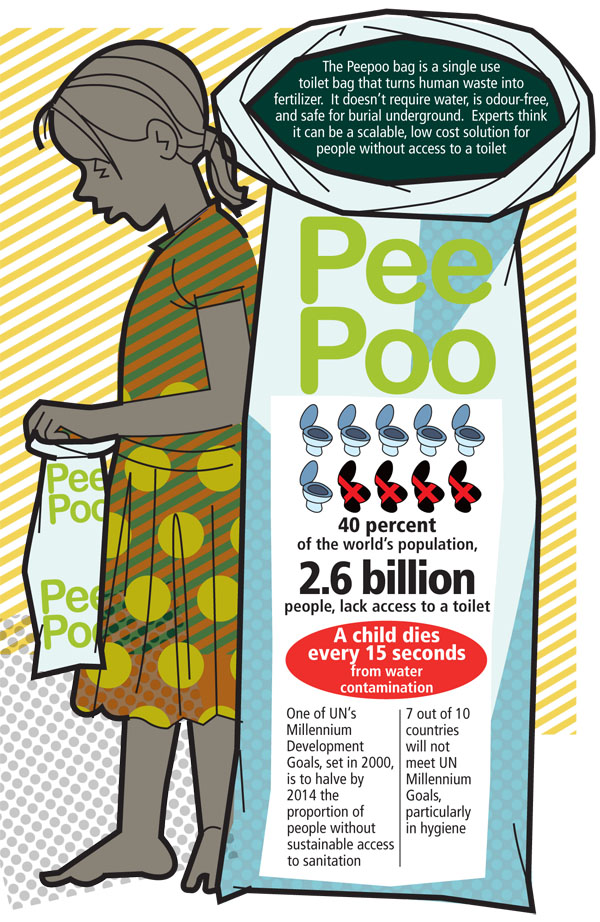
Peepoo, the Single Use Toilet Bag, Faces Cultural Resistance
The Peepoo bag is fine for sanitation but faces cultural and cost barriers
In a slum 30 kilometres outside Dhaka in Bangladesh, going to the toilet is a nightmare for 49-year-old Kokila (name changed). She has to wait in a long line and then use the hanging latrine that’s covered in flies, faeces, and mould. Last May, Kokila was introduced to a new way to go to the bathroom — in a bag. 
Experts say the bag can bring down the incidence of diarrhoea and other diseases that come as a result of bad sanitation.
Professor Eric O. Odada in Nairobi, member of UN Secretary-General’s Advisory Board on Water and Sanitation, thinks the Peepoo bag could hasten India towards its Millennium Development Goal for hygiene. “Upgrading systems for hygiene in slums is a very expensive thing. The Peepoo is a better and more sustainable method. But they will need a government or other wheel to operationalise it,” he cautions. Peepoople is in discussion with organisations like Oxfam, WaterAid, UNICEF, and UN Refugee Agency. The bag can also have an impact during emergencies, such as floods or droughts.
Five to eight litres of water are used in every flush of a toilet; at least three litres are used for a single ablution. That water is potentially saved if the bag is used. While the Sulabh Sanitation movement and IIT Kanpur’s “Zero-Waste Toilet” have provided affordable sanitary solutions, both have significant upfront costs, and cannot be scaled as easily as the Peepoo bag.
The biggest concern about the bag is the cost per bag which is expected to be Rs. 2.61. However, this is cheaper than building a flush toilet connected to a sewer or septic tanks which costs $400 to $1500. Even a communal toilet or basic bit latrine is between $10 and $40.
Kamal Kar of Community Led Total Sanitation, Bangladesh, says the bag might face cultural problems. “Because we don’t use paper, but water, there is the question of how people will do ablution with the bag.” But Peepoople founder Anders Wilhelmson says the bag has changed preconceived notions. For instance, in Bangladesh, families overcame the taboo about defecating indoors.
“Water for Life” posits that if the Millennium Development Goal was achieved, the annual global value of adult working days gained would amount to almost $750 million.
The question is — will India bag it?
(This story appears in the 19 February, 2010 issue of Forbes India. To visit our Archives, click here.)
-
 Jac
JacCould someone give me more information about the cultural barriers to using the bags? I\'m working on a project on the issue of open defecation in India and thought about using the bags. Any information on the pros cons to the bags in India would be very helpful!
on Feb 5, 2015 -
 RAJEEV GUPTA
RAJEEV GUPTAReally it is a fantastic Innovation. As part of my diversification plans would not in the 2nd phase of life would like to be a social entrepreneur and would think that this is a product with a cause for India. Could i be introduced to the company / people to look at a business model for marketing in the developing nations starting with India?
on Mar 3, 2010














